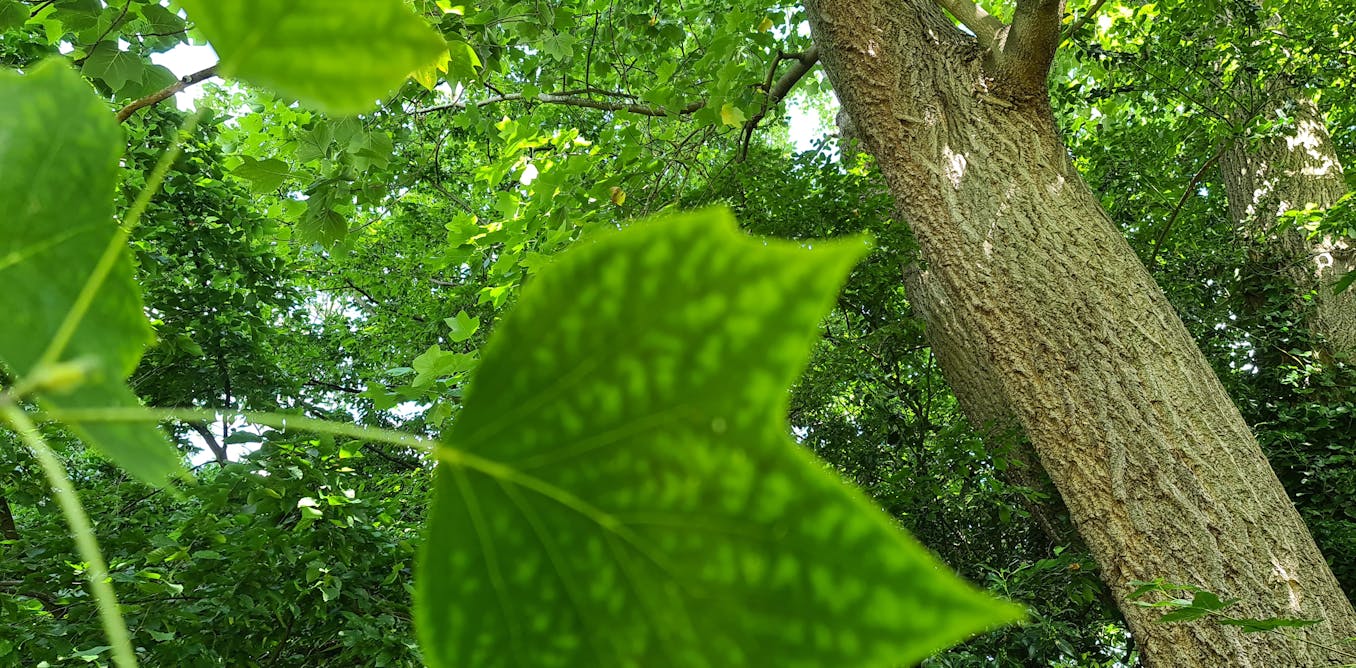
How we discovered a new type of wood - and how it could help fight climate change
Raymond Wightman is employed at the Sainsbury Laboratory Cambridge University which receives core funding from The Gatsby Charitable Foundation.
For as long as scientists have studied trees, we have categorised them into two types based on the sort of wood they make. Softwoods include pines and firs and generally grow faster than hardwoods, like oaks and maples, which can take several decades to mature and make a denser wood.
However, our recent research has uncovered something completely new: a third category we’re calling “midwood”. This discovery could prove to be valuable in the fight against rising carbon dioxide (CO₂) levels in Earth’s atmosphere – the primary cause of climate change.
Trees are natural carbon sinks. This means they absorb huge amounts of CO₂ from the air and store it in their wood. The tulip tree (Liriodendron tulipifera), also known as the yellow poplar, is a top performer in carbon capture. In the mid-Atlantic US, forests dominated by tulip trees store between two and six times more carbon than forests where other species prevail. The tulip tree is already popular in plantations in parts of south-east Asia and cited as a good choice for carbon capture for gardeners and urban planners in the US.
This species, along with its close relative the Chinese tulip tree (Liriodendron chinense), belongs to an ancient lineage dating back 50-30 million years — a period marked by significant shifts in atmospheric CO₂. Only these two species survive. And until recently, their chemistry and structure, which might tell us why these trees are so good at capturing carbon, were largely unknown.










/cdn.vox-cdn.com/uploads/chorus_asset/file/25242409/20230608_Palworld_Screenshot_02.png)












